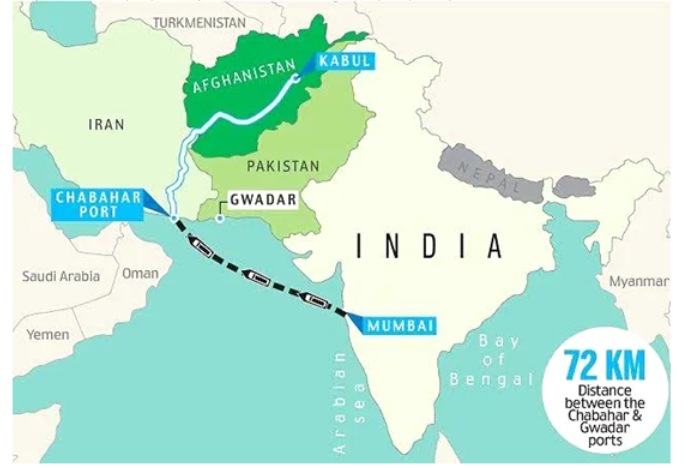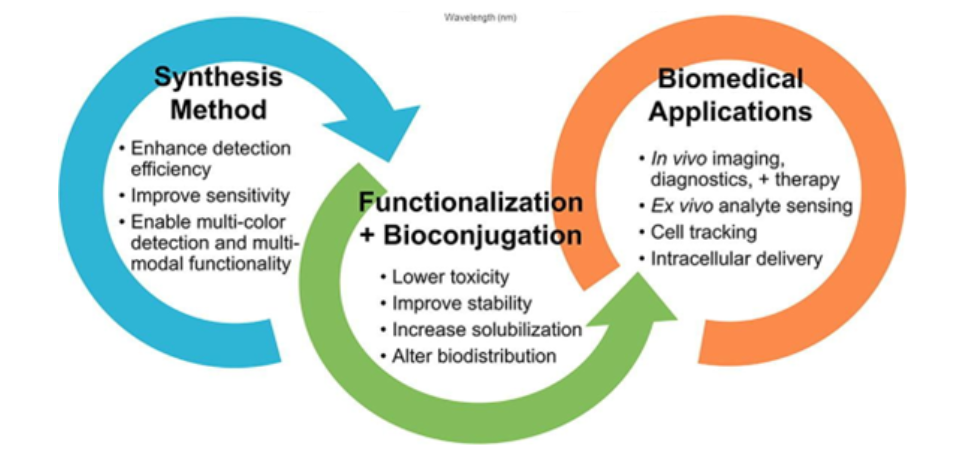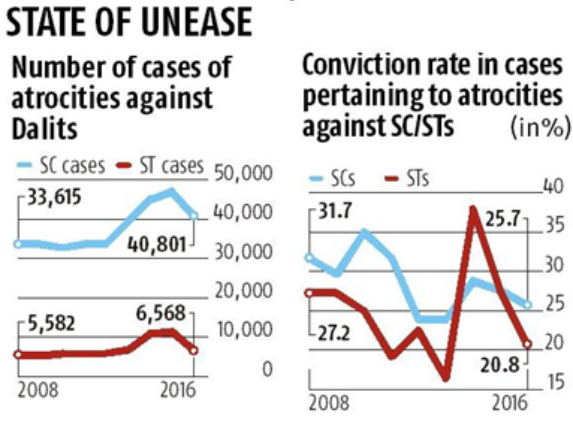Friday, 13th October 2023
State’s seizure of India’s press
Exam View: Constitutional background of press freedom in India; Status of press freedom in India today; Challenges obstructing press freedom in India; Protective measures for the press.
Context: Recent actions against journalists from the online portal NewsClick, such as raids, seizures, and arrests, amplify the calls for protections of digital data and press freedom.
Constitutional background of press freedom in India
- Freedom of press or media refers to the rights given by the Constitution of India under the freedom and expression of speech in Article 19(1)(a).
- Article 19 of Universal Declaration of Human Rights enshrined that everyone has the right to freedom of opinion and expression.
Status of press freedom in India:
- The NewsClick incident:
- The interrogations pivot on three significant events: the anti-farm law protests, the North East Delhi riots of 2020, and the response to COVID-19.
- All these events are not just matters of public interest demanding accountability from the Union Government but also subjects of criminal prosecutions by the Delhi police.
- The very entity they report on now investigates and knows everything about them.
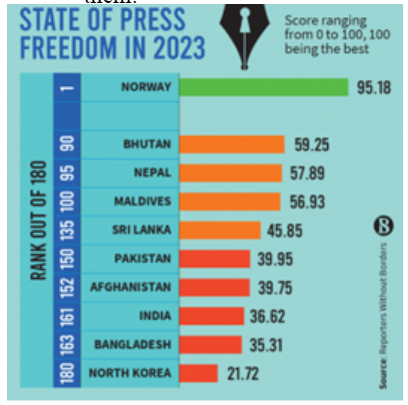
- By May 2023, 44 media entities and journalists had faced scrutiny from investigative and tax agencies over the previous five years.
Challenges obstructing Press Freedom in India:
- Archaic laws:
- The Code of Criminal Procedure (CrPC), rooted in the time of telegraphs and wooden chests, guides India’s criminal justice process.
- This approach not only ignores the invasiveness of modern technological advances but also struggles to uphold democratic rights within the Constitution of India.
- Self-incrimination:
- Specific laws such as the Prevention of Money Laundering Act and the Income-Tax Act clash with the right to privacy and protection against self-incrimination, as stated in Part III and Article 20(3) of the Constitution.
- Legal Vacuum:
- The Karnataka High Court, in the Virendra Khanna vs State of Karnataka case determined that an arrested individual can indeed be coerced to unlock their smartphone, granting law enforcement unrestricted access to personal data.
- While a Central Bureau of Investigation special court has ruled to the contrary and the law is in flux, the confusion results in a guarantee of investigatory oppression.
- Police misbehaviour:
- Chapter 8 of the CrPC houses the essence of the search and seizure powers.
- The law provides for voluntary document submission and police actions based on warrants, but people often comply with law enforcement demands without warrants, fearing negative consequences.
- The Lokniti-CSDS-Common Cause ‘Status of Policing in India’ report shows that 47% believe that the police can access their phones without consent.
- Forceful disclosure of sources:
- The forceful unlocking of their devices and subsequent cloning of their content uncovers information far beyond the scope of typical criminal investigations.
- Such access lays bare years of their personal and professional communications, exposing intricate relationships, networks, and confidential sources.
- The quiet judiciary:
- Journalist Paranjoy Guha Thakurta. consulted with NewsClick and was interrogated by the Delhi police.
- Even before this incident, the Pegasus spyware compromised his phone, prompting him to seek the Supreme Court’s intervention.
- Yet, his case, among others, has not seen a hearing in over a year, even with an order specifying a listing within four weeks.
Protective measures for the press,
- Shielding the press: Strengthen legal protections against censorship and reform laws that can be misused to restrict press freedom.
- Create impartial media regulators: Establish independent media regulatory bodies that are free from government control and political influence.
- Safeguarding journalists and whistleblowers from harassment, violence, and threats, both online and offline.
- Uphold journalistic integrity: Media organisations should be trained to uphold journalistic integrity along with ensuring accuracy, fairness, and balanced reporting.
Stratospheric Aerosols & Global Food Impact
In News: A recent publication in the journal Nature Food sheds light on the possible impacts of employing a geoengineering method called stratospheric aerosol intervention (SAI) on global food production.
Key Highlights of the Study
- Stratospheric aerosol intervention (SAI) is a climate intervention method considered a contingency plan for addressing climate change if traditional mitigation strategies prove inadequate.
- SAI aims to imitate the cooling effect of volcanic eruptions by introducing sulphur dioxide into the stratosphere, a layer of the Earth's atmosphere spanning from around 10 to 50 kilometres in altitude.
- In the stratosphere, sulfur dioxide undergoes oxidation, forming sulfuric acid, which subsequently transforms into reflective aerosol particles.
- For example, is the eruption of Mount Pinatubo in the Philippines in 2001, which discharged approximately 15 million tonnes of sulfur dioxide into the stratosphere, leading to the formation of aerosol particles.
- According to data from the National Aeronautics and Space Administration (NASA), this volcanic event resulted in a global average temperature decrease of about 0.6 degrees Celsius over the following 15 months.
Impact on Agriculture
- The impact of stratospheric aerosol intervention (SAI) on agriculture is highly diverse and contingent on factors such as precipitation and solar radiation.
- Understanding the optimal global temperature ranges for crop production is vital for making informed decisions regarding SAI.
- Researchers employ computer models to assess the consequences of different SAI scenarios on various crops, including maize, rice, soybean, and spring wheat.
- In a scenario of uncontrolled climate change, crop production thrives in colder, high-latitude regions such as Canada and Russia.
- Moderate levels of SAI could potentially boost food productivity in mid-latitude temperate regions like North America and Eurasia.
- Extensive SAI measures might result in increased agricultural production in tropical regions. These regions encompass Mexico, Central America, the Caribbean, the northern half of South America, most of Africa, portions of the Middle East, the majority of India, Southeast Asia, a significant part of Australia, and numerous island nations in Oceania.
|
Stratospheric Aerosol Intervention |
|
|
UPSC Prelims Previous Year Question
(a) Creating the artificial rains in some regions Answer: (d) |
Coral Reef Breakthrough - Edukemy Current Affairs
Why in News: Recently, the Coral Reef Breakthrough has been launched by the International Coral Reef Initiative (ICRI) in partnership with the Global Fund for Coral Reefs (GFCR) and the High-Level Climate Champions (HLCC).
Coral Reef Breakthrough:
- The Coral Reef Breakthrough is a scientific project with specific objectives for state and non-state actors to jointly conserve, protect, and restore coral reefs, ensuring their essential contributions to the future of mankind.
- This initiative aims to safeguard at least 125,000 square kilometres of shallow-water tropical coral reefs by 2030 through investments of at least US$12 billion.
- Coral polyp colonies make up coral reefs, which are underwater ecosystems. Massive limestone formations known as coral reefs are created by coral polyps. They are frequently referred to as the "rainforests of the sea" since they are home to around 25% of all known marine species.
- These sea invertebrates have calcium carbonate-based rigid exoskeletons. They are sessile, which means they are set in situ for all time.
Four Action Plan for Coral Reef Breakthrough:
- Action point 1: Stop drivers of loss: Mitigate local drivers of loss including land-based sources of pollution, destructive coastal development, and overfishing.
- Action point 2: Double the area of coral reefs under effective protection: Bolster resilience-based coral reef conservation efforts by aligning with and transcending global coastal protection targets including 30by30.
- Action point 3: Accelerate Restoration: Assist the development and implementation of innovative solutions at scale and climate smart designs that support coral adaptation to impact 30% of degraded reefs by 2030.
- Action point 4: Secure investments of at least USD 12 billion by 2030 from public and private sources to conserve and restore these crucial ecosystems.
International Coral Reef Initiative (ICRI):
- A global alliance of nations and organisations which works to protect coral reefs and associated ecosystems all over the world.
- Eight governments—Australia, France, Japan, Jamaica, the Philippines, Sweden, the United Kingdom, and the United States of America—founded the Initiative in 1994.
- At the First Conference of the Parties to the Convention on Biological Diversity in 1994, it was announced.
- There are 101 members of ICRI, representing 45 nations, including India.
High-Level Climate Champions (HLCC):
- They have been appointed by the UN to help non-state entities including corporations, local governments, and financial institutions support the objectives of the Paris Agreement on climate change.
Global Fund for Coral Reefs (GFCR)
- The GFCR is a hybrid financial tool to mobilise money and action for the preservation and restoration of coral reef ecosystems.
- In order to promote sustainable interventions to safeguard coral reefs and the communities that depend on them, it distributes grant financing and private resources.
|
UPSC Prelims Previous Year Question Prelims
Answer: (a) Q.2 Consider the following statements: (2018)
Which of the statements given above is/are correct?
Answer: (d) Q.3 Which of the following have coral reefs? (2014)
Select the correct answer using the code given below:
Answer: (a) Mains
|
BITS and Kasturi Cotton Program
Why in News: In conjunction with Cotton Corporation of India (CCI) and the EU-Resource Efficiency Initiative, the Ministry of Textiles recently organised a conference on World Cotton Day (7 October 2023) that covered environmentally conscious methods and best practises in the cotton value chain.
Bale Identification and Traceability System (BITS):
- The BITS is a technological initiative in the cotton industry that utilizes Blockchain Technology to assign unique QR codes to cotton bales.
- It was put in place to make sure that important characteristics regarding cotton bales, such their quality, variety, origin, and processing methods, are clear and readily available to both local and foreign buyers.
- By scanning the QR code, stakeholders, including cotton buyers, textile manufacturers, and others, can trace the entire journey of the cotton bale from its origin to the final product.
- It is implemented by the Cotton Corporation of India (CCI) in collaboration with other relevant stakeholders such as State Governments.
Kasturi Cotton Program:
- It is an initiative introduced by the Ministry of Textiles in India to promote the production and availability of premium quality cotton with traceability.
- The Ministry of Textiles' TEXPROCIL, working with CCI, is in charge of managing this program's implementation.
- It is certified to meet certain quality standards, which may include fibre length, strength, colour, and other characteristics that make it suitable for premium textile products.
Cotton Production:
- It is a Kharif Crop which requires 6 to 8 months to mature.
- Conditions required:
- Temperature: Between 21-30°C.
- Rainfall: Around 50-100 cm.
- Soil Type: Well-drained black cotton soil (Regur Soil)
- Producers:
- Global: India is the top Cotton producer in the world (India > China > US).
- National: Gujarat is the leading cotton producer state in India (Gujarat > Maharashtra > Telangana > Andhra Pradesh > Rajasthan).
- Species:
- Four cultivated species of cotton: Gossypium arboreum, G.herbaceum, G.hirsutum and G.barbadense.
- Gossypium arboreum and G.herbaceum are known as old-world cotton or Asiatic cotton.
- G.hirsutum is also known as American cotton or upland cotton and G.barbadense as Egyptian cotton. These are both new world cotton species.
- Hybrid Cotton: Cotton made by crossing two parent strains that have different genetic characters.
- Bt Cotton: It is a genetically modified organism or genetically modified pest-resistant variety of cotton.
|
UPSC CSE Previous Year Question Prelims Q1. The black cotton soil of India has been formed due to the weathering of (2011)
Answer: (b) Q2. A state in India has the following characteristics: (2011)
Which one of the following states has all of the above characteristics?
Answer: (b) Q3. With reference to the cultivation of Kharif crops in India in the last five years, consider the following statements: (2019)
Which of the statements given above are correct?
Answer: (a) |
Indian Ocean Rim Association (IORA)
Why in news? Sri Lanka is set to take over the chairmanship of the Indian Ocean Rim Association (IORA) during the 23rd Council of Ministers’ Meeting scheduled for October 2023, in Colombo.
About:
- The Indian Ocean Rim Association is an intergovernmental organization established in 1997, comprising 23 member states and 11 dialogue partners.
- Members: Australia, Bangladesh, Comoros, France, India, Indonesia, Iran, Kenya, Madagascar, Malaysia, Maldives, Mauritius, Mozambique, Oman, Seychelles, Singapore, Somalia, South Africa, Sri Lanka, Tanzania, Thailand, United Arab Emirates, Yemen.
- Dialogue Partners: China, Egypt, Saudi Arabia, Germany, Italy, Japan, South Korea, Russia, Turkey, the United Kingdom, and the United States of America.
- Secretariat: Ebène, Mauritius
- IORA’s apex body is the Council of Foreign Ministers (COM) which meets annually.
- Six Priority and Two Focus Areas:
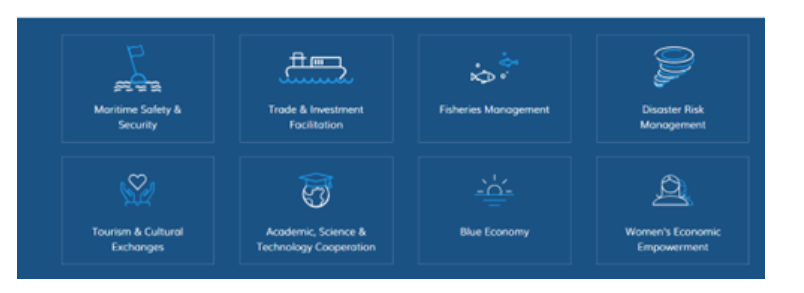
More Information:
- Bangladesh held the chairmanship from November 2021 - November 2023.
Dancing Frogs - Edukemy Current Affairs
Why in news? According to the Wildlife Trust of India the dancing frogs are the most threatened amphibian genus of India.
About:
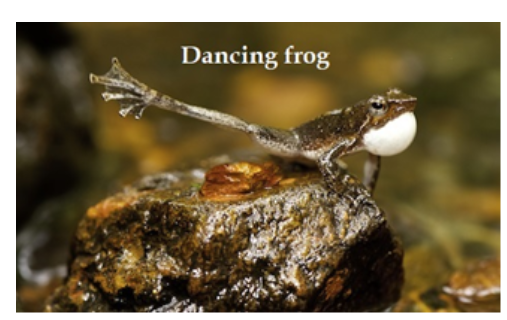
- Dancing frogs, specifically from the Micrixalus genus, are a group of frogs.
- Dancing frogs are endemic to the Western Ghats.
- The Western Ghats, a biodiversity hotspot spread across Kerala, Karnataka and Tamil Nadu is rich in amphibian diversity.
- Habitat:
- They prefer habitats with a thick canopy cover, typically around 70-80 %, and are often found near slow-moving perennial streams within the Western Ghats.
- Behavior and Mating Display:
- Dancing frogs exhibit a unique mating behavior characterized by foot flagging, where males extend their hind legs and wave their webbed toes.
- This visual display helps in attracting female mates and signaling to rival males.
- This act is called “foot flagging” and gives the species their name.
- Amphibians on the brink of extinction:
- It is the fifth most threatened genus in the world with 92 per cent of its species in the threatened category.
- Around 41% of amphibian species are on the brink of extinction.
- This means around two out of every five amphibian species are at risk of extinction.
- Out of 426 amphibian species assessed in India, 139 are threatened (Critically Endangered, Endangered, and Vulnerable).
- After the dancing frogs, the Nyctibatrachidae (night frogs) are the most threatened.
- Significance:
- Frogs are valuable in the food chain and also provide other ecological services.
- Major Threat:
- These species are threatened by invasive species like the mosquito fish, land use change, variation in temperature and humidity, extreme weather events such as floods and excess rainfall, infectious diseases, water pollution, light pollution, and infrastructure projects.
Asia-Pacific Institute for Broadcasting Development
Why in news? Recently, India has been elected president of the Asia-Pacific Institute for Broadcasting Development (AIBD) General Conference (GC) for the third successive term.
About:
- The Asia-Pacific Institute for Broadcasting Development (AIBD) is a unique regional intergovernmental organization servicing countries of the United Nations Economic and Social Commission for Asia and the Pacific (UN-ESCAP) in the field of electronic media development.
- It was established in 1977 under the aegis of United Nations Educational, Scientific and Cultural Organization (UNESCO).
- Objective:
- The AIBD is mandated to achieve a vibrant and cohesive electronic media environment in the Asia-Pacific region through policy and resource development.
- Founding Organizations:
- The International Telecommunication Union (ITU), the United Nations Development Programme (UNDP), and the United Nations Educational, Scientific and Cultural Organisation (UNESCO) are founding organizations of the Institute, and they are non-voting members of the General Conference.
- Members: It currently has 92 member organizations from across 44 countries.
- This includes 26 Government Members (countries) represented by 48 broadcasting authorities and broadcasters and 44 Affiliates (organizations) represented by 28 countries and regions in Asia, Pacific, Europe, Africa, Arab States and North America.
- Secretariat:
- Kuala Lumpur, Malaysia.
- India and AIBD: India is one of the founding members of AIBD.
- Prasar Bharati, India’s public service broadcaster is the representative body of the Ministry of Information & Broadcasting at AIBD.
- Prasar Bharati is a statutory autonomous body, established under the Prasar Bharati Act in 1997.
- Prasar Bharati, India’s public service broadcaster is the representative body of the Ministry of Information & Broadcasting at AIBD.
Loknayak Jayaprakash Narayan - Edukemy Current Affairs
Why in news? Recently, The Prime Minister of India has paid tributes to Loknayak Jayaprakash Narayan on his birth anniversary.
About:
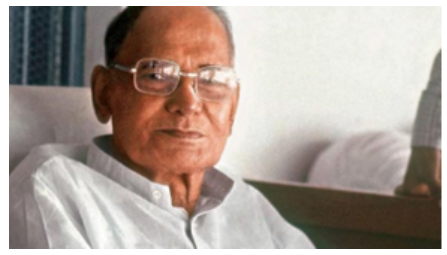
- Jayaprakash Narayan born on 11th October 1902, in Sitabdiara, Bihar, popularly referred to as JP or Lok Nayak (People’s Leader), was an Indian Independence activist, social reformer and political leader.
- Influenced by both Marxist ideas in the US and Gandhian ideology.
- Contribution to Freedom Struggle:
- Joined the Indian National Congress in 1929 and participated in the civil disobedience movement and Quit India Movement.
- He played a key role in the formation of the Congress Socialist Party (1934), a left-wing group within the Congress Party.
- Post-Independence Role:
- In 1948, he left the Congress Party and initiated an anti-Congress Campaign.
- In 1952, he formed the Praja Socialist Party (PSP).
- In 1954, he devoted his life exclusively to the Bhoodan Yajna Movement, of Vinoba Bhave, which demanded land redistribution to the landless.
- In 1959, he argued for a “reconstruction of Indian polity” by means of a four-tier hierarchy of village, district, state, and union councils (Chaukhamba Raj).
- He led the movement against the Indira Gandhi Regime in response to electoral law violations, promoting a program of ‘Sampoorna Kranti’ or total revolution in 1974.
- The ‘Total Revolution’ had seven components: political, social, economic, cultural, ideological, educational, and spiritual.
- Objective:
- His objective was to bring about societal change in line with the ideals of Sarvodaya, a Gandhian philosophy emphasizing progress for all.
- Awards:
- Jayaprakash Narayan was posthumously awarded the Bharat Ratna in 1999.
- Died: 8th October 1979.
Nanaji Deshmukh - Edukemy Current Affairs
Why in news? Recently, Prime Minister, Shri Narendra Modi has paid tributes to Bharat Ratna Nanaji Deshmukh on his Jayanti.
About:
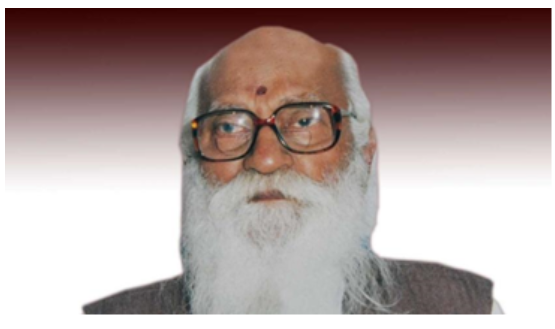
- Birth: 11th October 1916 in Maharashtra’s Hingoli district.
- Influenced by: Lokamanya Tilak and his nationalist ideology and Dr. Keshav Baliram Hedgewar, founding Sarsangha-chalak (head) of the Rashtriya Swayamsevak Sangh (RSS).
- His life’s work was deeply rooted in the principle of “Antyodaya,” advocating for uplifting the last person in society.
- He embodied this philosophy through his tireless efforts, focusing primarily on the concept of “Gramodaya” – the development of villages.
- Political Participation:
- He was a leader of Bharatiya Jana Sangh and Rashtriya Swayamsevak Sangh.
- He actively participated in Acharya Vinoba Bhave’s Bhoodan Movement.
- Deshmukh was the main force behind Jayaprakash Narayan's agitation for total revolution.
- Social Activism:
- He was a social reformer with focus on health, education and rural self-reliance.
- He established Chitarkoot Gramoday Vishwavidyalaya in Chitrakoot - India’s first rural University and served as its Chancellor.
- He established Saraswati Shishu Mandir (SSM), which runs a chain of private schools in India and is said to be the educational wing of the RSS.
- He started the country’s first SSM at Gorakhpur in 1950.
- He was the founder of the Deendayal Research Institute (DRI) situated at Chitrakoot.
- Electoral Politics:
- He was one of the main architects of the Janata Party.
- Awards:
- 1999: He was awarded Padma Vibhushan.
- 2019: He was posthumously awarded the Bharat Ratna.
- Death: 27th February 2010.
Operation Ajay - Edukemy Current Affairs
Why in news? Recently, India has launched Operation Ajay to facilitate the return of citizens from Israel amid a full-blown war with the Hamas group in Gaza.
About:
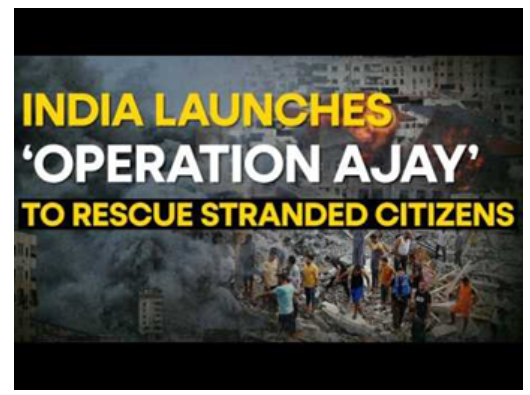
- Operation Ajay is not technically an evacuation operation. It is an operation to repatriate its citizens from Israel.
- Special chartered flights will bring back the Indians.
- Indian Navy ships will be deployed if the need arises.
- Indians in Israel who wish to return will be facilitated in this operation.
- There are around 18,000 Indians in Israel including students, professionals and traders.
- The announcement was made concurrently with Israel's ongoing military operations targeting Hamas militants in the Gaza Strip.
- These actions were undertaken in response to a severe and violent attack that occurred within the borders of Israel.
- This marks the second evacuation operation of the year, following Operation Kaveri, which brought back Indian citizens from Sudan earlier.
Share the article
Edukemy’s Current Affairs Quiz is published with multiple choice questions for UPSC exams
MCQ
Get Latest Updates on Offers, Event dates, and free Mentorship sessions.

Get in touch with our Expert Academic Counsellors 👋
FAQs
UPSC Daily Current Affairs focuses on learning current events on a daily basis. An aspirant needs to study regular and updated information about current events, news, and relevant topics that are important for UPSC aspirants. It covers national and international affairs, government policies, socio-economic issues, science and technology advancements, and more.
UPSC Daily Current Affairs provides aspirants with a concise and comprehensive overview of the latest happenings and developments across various fields. It helps aspirants stay updated with current affairs and provides them with valuable insights and analysis, which are essential for answering questions in the UPSC examinations. It enhances their knowledge, analytical skills, and ability to connect current affairs with the UPSC syllabus.
UPSC Daily Current Affairs covers a wide range of topics, including politics, economics, science and technology, environment, social issues, governance, international relations, and more. It offers news summaries, in-depth analyses, editorials, opinion pieces, and relevant study materials. It also provides practice questions and quizzes to help aspirants test their understanding of current affairs.
Edukemy's UPSC Daily Current Affairs can be accessed through:
- UPSC Daily Current Affairs can be accessed through Current Affairs tab at the top of the Main Page of Edukemy.
- Edukemy Mobile app: The Daily Current Affairs can also be access through Edukemy Mobile App.
- Social media: Follow Edukemy’s official social media accounts or pages that provide UPSC Daily Current Affairs updates, including Facebook, Twitter, or Telegram channels.


